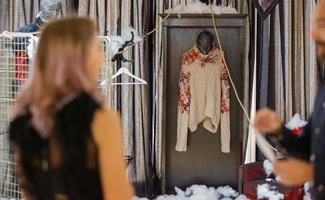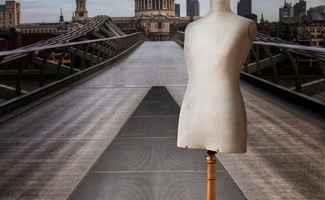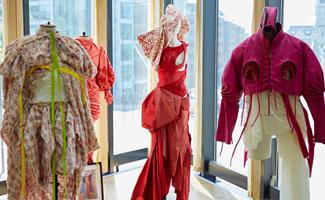Any fashion design or textile student will tell you that it can be quite costly to submit an impressive practical project. Good quality fabrics and tools are expensive, and most students have to stick to a usually limited budget. In addition, most projects will involve your reworking and adapting parts of your assignment which can result in additional costs.
While it’s a good idea to invest in quality tools and instruments which will serve you for several years, spending too much on expensive materials for your textile design course projects may not always be a practical option. However, you don’t need to let a limited budget hinder your creative ideas and inspirations.
This blog is a must-read to learn cost-effective fashion tips for all fashion and textile design students.
Reusing fabrics for projects
If the project or designs for your fashion textiles course required a lot of fabric, cost of your project can soar suddenly. Instead, you should consider reusing parts of fabric from your older projects for your current one. Good quality linen, cotton bed sheets and comforters are also a great alternative as fabric sources for fashion textiles. You can even look for artsy but old curtains or drapes, especially sheer or light gauze ones. They can be great substitutes for chiffon fabrics.
Reusing haberdashery
Apart from fabrics, there are many other components to textile or fashion projects such as lace, buttons, zippers or closures. Using your local haberdashery stores for parts to add to your project can prove to be costly in the long run. Instead, save the buttons, zips and closures before discarding clothes such as an old coat or a faded dress. You can also cut pieces of decorative laces and patterns to be used for your new designs.
Source items from goodwill or thrift stores
Apart from fabrics and knick-knacks, there are other elements to a well-tailored outfit such as good quality needles and tailoring machines. If buying new tools is taxing on your pocket, you should keep a lookout for second-hand machines at thrift or goodwill stores. You can also source other raw materials such as coloured paper, tailor’s chalk, glue guns and sharpies at a cheap rate from these stores.
Buy items in bulk whenever you can
Irrespective of whether you are working in a team project for your fashion textiles course, you can always partner up with other students to buy basic supplies. This way you can save up on the exorbitant fabric costs for your designs, especially for expensive fabrics like silk or linen. You can also explore small factories or warehouses that produce these items in bulk. Bulk buying can often get you good discounts since you avoid wholesale prices.
Explore online sources
If browsing through thrift stores or wholesale warehouses in search of necessary materials is taking up too much of your time, why not consider looking at online sites? Many websites offer good deals on fabrics and other supplies which can be easily shipped to your front door!
Let your designs and tailoring do the talking
Even if your materials are of average quality, a well-cut design and seamlessly tailored outfit can demonstrate your skills as an excellent textile or fashion designer. You can take inspiration from the countless successful fashion designers who started their careers from nothing.
You should remember that college projects are the base for a successful career in the fashion and textile industry. You should, therefore, spend more time honing your crafting skills rather than relying on expensive materials.
If you are an aspiring designer who wants to make it big in the fashion world, you should focus on fashion and textiles courses that will provide you with industry-relevant skills. The BA course in fashion and textiles offered by London College of Contemporary Arts is an ideal programme to pursue. It will provide you with practical skills and offers multiple opportunities for collaboration that will significantly improve your design abilities.
Click here to learn more about the programme at LCCA.
This article is written by Sweha Hazari and edited by Amelia Hayward-Cole.


 Fashion Business and Management 101: Mastering the Art of Selling Style
Fashion Business and Management 101: Mastering the Art of Selling Style  What kind of fashion trends in London can you expect to dominate in 2022?
What kind of fashion trends in London can you expect to dominate in 2022?  What are the latest luxury marketing trends in 2022?
What are the latest luxury marketing trends in 2022?  The Ultimate Guide to Fashion Marketing
The Ultimate Guide to Fashion Marketing  How can an MA in Fashion Business and Management help you shape your career as an industry leader?
How can an MA in Fashion Business and Management help you shape your career as an industry leader?